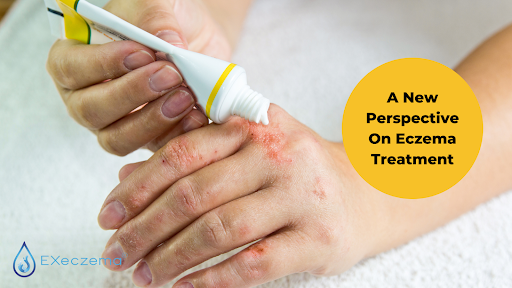
A New Perspective On Eczema Treatment
Share
Eczema Treatment Types
Treatments for eczema are across the board in terms of price, range, and effectiveness. However, most eczema treatments are topical – they perform some function at the surface or outer layer of skin. These include treatments such as creams, ointments, soaps, topical corticosteroids, and balms – one or all of which you may have tried previously. Sadly, for many, there's usually plenty of time through the life of their eczema to experiment with almost all these treatments. Particularly because, quite often, eczema is maintained by these kinds of treatments as they are not intended to end eczema. Instead, they are essentially a way for someone to address acute issues, and much like an over-the-counter painkiller and similar products, can quickly degrade into becoming thought of as an actual ‘treatment’.Effectiveness of Topical Eczema Treatments
Have you ever heard someone say, "I've tried everything, but nothing works"? In the case of eczema, they may mention the variety of topical treatments they’ve tried. They might even say that some of the treatments worked for a time. This provides our next clue as to why many so-called eczema treatments aren't "working". Now, this isn't to say that eczema treatments aren't doing any work. They do work, or rather simply do what they're stated to do: like moisturise the area they’re applied to. Often, these are used because dry or flaky skin can be considered a symptom of eczema, or because of the realisation that dry skin can lead to eczema. Obviously, a moisturiser moisturises the skin, so these creams are working in that context. However, what they are not working to do is to end eczema. Indeed, this is not what they are expected to do, especially given the topical nature of these treatments. The unfortunate consequence, however, is that the people using these “treatments” are left with either the same level or more eczema within a short period of time. This effect then leads them to seek more of the same type of treatments, and we end up at the quote cited earlier.A New Way to Think About Eczema Treatment
Let's explore the question that follows: what if the treatment was the cause? Unless you’ve conducted some fairly rigorous studies on yourself, it can be hard to determine a specific cause for your eczema. Here's a mind experiment that can help us view things differently: you probably know, or have read or been told, how to manage your eczema. Now, think back through all the advice you have been given to manage and ease it over the years. Next, replace the word “manage” in that context with the word maintain. You will likely notice that both words mostly agree with the advice and yet lead to the same skin reaction (perhaps one key outlier may be that of managing your stress, which can be considered part of the cause). In a way, treating eczema skin as such typically leads to a maintenance of eczema, while these treatments can sometimes appear to alleviate immediate symptoms such as redness. However, I've found that treating the cause of the eczema (as opposed to its symptom) is what can actually enables the skin to heal itself within weeks without drugs.Treating the Cause of Eczema
Our bodies are some of the most incredible machines on the planet, and they have been fine-tuned over millennia to care for themselves. In that sense, it may help many to EXplain eczema to themselves from this perspective. Once we can change that outside view of using topical treatments, which are working purely as moisturisers (and sometimes potentially as further irritants), we see that there are other ways to consider treatment. Ways that include addressing inner causes such as stress, and changing our mindset towards eczema. Here's a quick example of how that works. We know stress leads to dry skin, and when this happens we have a choice in relation to the dry skin symptom. From an “inner view'', we could follow a different pattern from topical treatment, like reducing stress to prevent the next patches of dry skin. This obviates the use of any creams – and should the stress be so great as to generate patches of dry skin, the inner view teaches to avoid applying creams to the dry skin as they can cause irritation. In some cases, it can also prevent that patch of skin from becoming dependent on a moisturiser in order to regain its own natural levels. Rather than treat the skin, treat the stress which led to the dry skin and subsequent redness. That begins with a mindset change and ends when the skin heals itself within weeks. ----- Stay tuned to our future blog posts for a deeper dive into this inner view of non-drug eczema treatment. If you'd like to learn more about this “inside view” which allows you to end eczema and how it might help you, there are wonderful resources I can recommend to help get you started: Eczema. The Inside View

